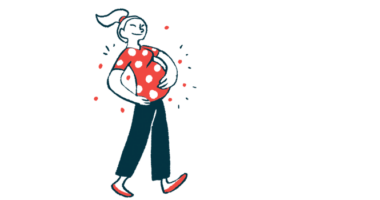PNH symptoms remain despite treatment with C5 inhibitors: Survey
Most of 59 patients in Japan on Ultomiris or Soliris report issues like fatigue

People in Japan using C5 inhibitors to treat their paroxysmal nocturnal hemoglobinuria (PNH) continue to experience symptoms like fatigue and shortness of breath, even if their hemoglobin levels surpass the median of real-world PNH populations, a survey study reports.
“This study contributes to understanding the unmet needs of the current therapies for PNH, highlighting the need for novel therapeutics,” the researchers wrote, noting that disease burden likely affects patients’ quality of life.
The study, “Burden of illness in Japanese patients with paroxysmal nocturnal hemoglobinuria receiving C5 inhibitors,” was published in the International Journal of Hematology.
Reports have noted continuing PNH symptoms in patients using a C5 inhibitor
PNH occurs when the complement system mistakenly attacks and destroys blood cells, particularly red blood cells. The complement system is a cascade of proteins that works with the immune system to protect the body against infection and to remove damaged cells or foreign materials.
The breakdown of red blood cells causes anemia, which happens when the body does not have enough healthy red blood cells to carry oxygen to tissues. As a result, PNH symptoms commonly include fatigue and shortness of breath.
Medications approved to treat PNH include Soliris (eculizumab) and Ultomiris (ravulizumab), which work by targeting a complement protein called C5. But not everyone responds well to these medications, with reports of patients continuing to experience disease symptoms and to require blood transfusions.
To understand how PNH impacts Japanese patients being treated with C5 inhibitors, researchers sent out a survey, both online and by post, to gather demographic information and evaluate the burden of the disease.
A total of 59 patients, with a mean age of 56.7, answered the survey; 55 were on Ultomiris and four on Soliris. Nearly two-thirds (64.4%) were women. The average time since their PNH diagnosis and participation in the survey was 16.8 years.
Mean hemoglobin levels in 86% of survey patients were low for this disease
Although most (86.4%) patients were on C5 inhibitors for one year or longer (18 or 30.5% for three or more years), their mean hemoglobin level was 10.2 grams per deciliter (g/dL). The median level of hemoglobin, the protein that carries oxygen in red blood cells, in real-world PNH populations is 10.5 g/dL, the researchers noted.
Of the 48 patients (81.4%) who ever needed a blood transfusion, 14.6% had undergone at least one transfusion in the previous year. A majority, 64.6%, had not received a blood transfusion over the previous three years.
A history of aplastic anemia, which happens when the body stops producing enough new blood cells, was reported by 39% of the patients. Blood clot-related events were reported by 15.3%, and a history of poor kidney function by 13.6%.
At the time of diagnosis, the most common symptoms were fatigue (84.9%), shortness of breath (81.1%), and dark urine (73.6%). At the time of the survey, fatigue (45.7%) and shortness of breath (37%) remained the most common symptoms.
On average, patients scored 39.1 points on the Functional Assessment of Chronic Illness Therapy (FACIT-Fatigue) scale, which ranges from zero (worst fatigue) to 52 (no fatigue). Patients with hemoglobin levels equal to or higher than 10.5 g/dL scored 43 points, similar to the general U.S. population, whereas the 33 people with lower hemoglobin levels scored 36.5 points.
In the Patient Health Questionnaire-8 (PHQ-8) depression scale, patients scored an average four points. The scale ranges from 0-24 points, with scores from 0-4 indicating no symptoms and scores from 5-9 indicating mild symptoms of depression.
While patients with hemoglobin levels equal to or higher than 10.5 g/dL scored a mean of 2.7 points on the PHQ-8 depression scale, those with levels below that cut-off value scored higher, at a mean of five points.
Substantial disease burden evident despite use of C5 inhibitor treatment
“The results indicated that a substantial disease burden remains in patients with PNH receiving anti-C5 treatment, not only in patients with [hemoglobin] levels below 10.5 g/dL but also in patients with [hemoglobin] levels [equal to or greater than] 10.5 g/dL,” the researchers wrote.
Disease burden is likely to translate into a poorer quality of life and perceived health status, the researchers wrote. At work, the average proportion of presenteeism (lost productivity) was 24.6% of working hours. Less than half of the study’s 59 patients, 25 or 42.4%, were gainfully employed (working for pay) at the time of the survey.
In the previous year, three people (5.1%) went to a hospital’s emergency room at least once due to PNH-related issues. Eight (13.6%) had been admitted to a hospital for PNH-related problems in the previous year.
“Many patients with PNH in Japan treated with [Soliris] or [Ultomiris] still suffer a significant disease burden in terms of symptoms, [quality of life], work productivity, and health resource utilization,” the researchers wrote. “It is hoped that this research highlights the need of novel more effective therapeutics for the treatment of PNH.”








